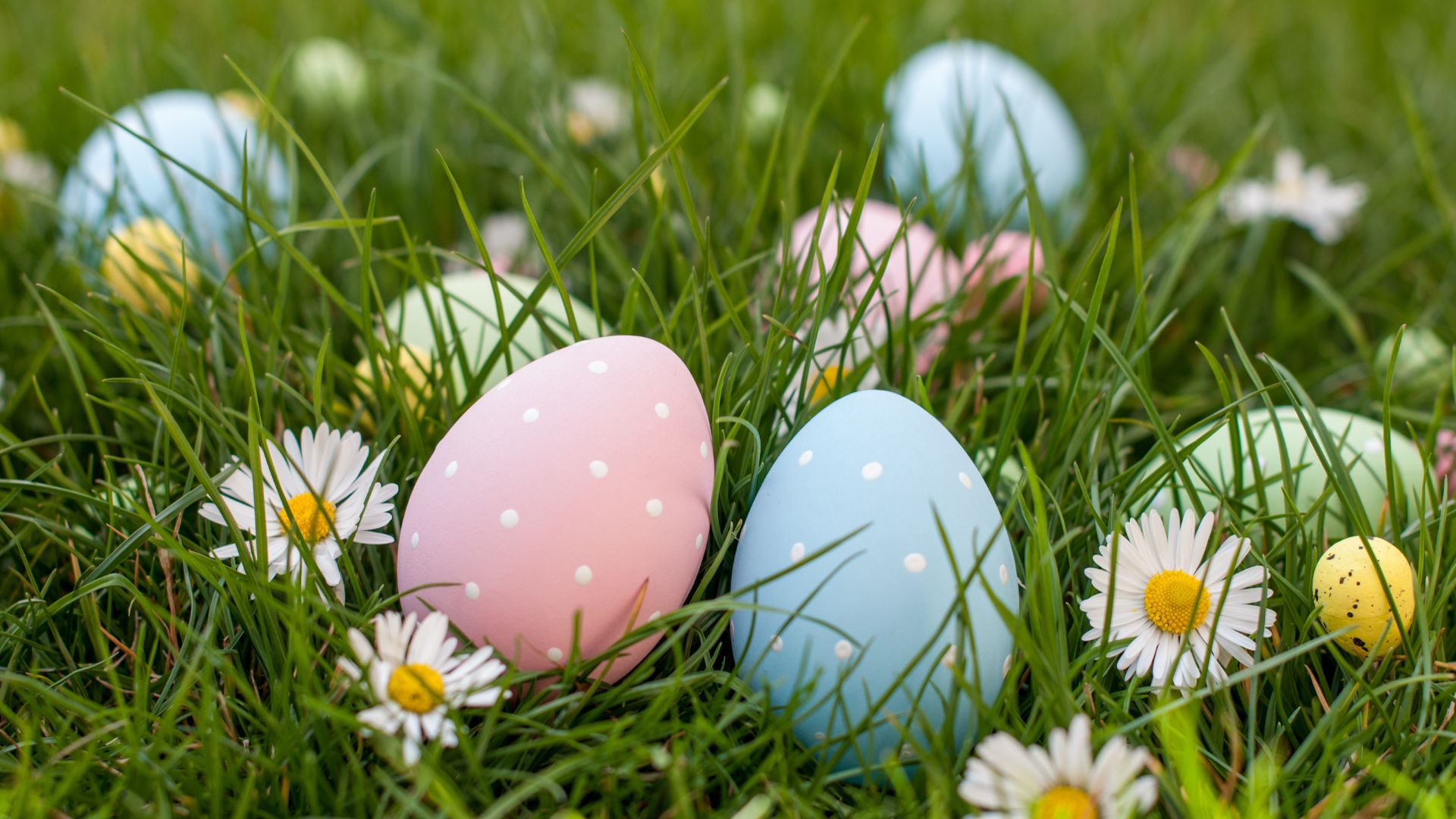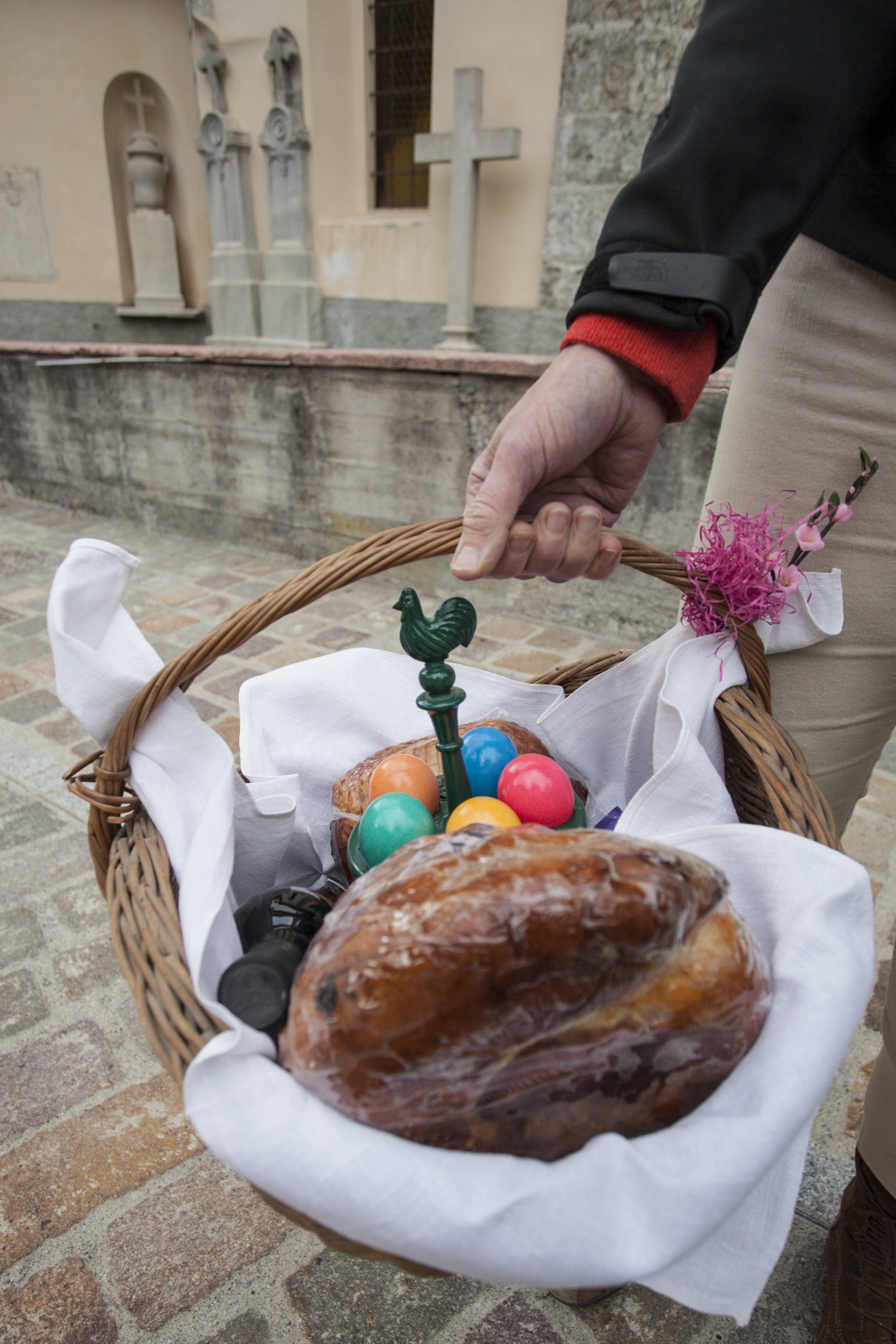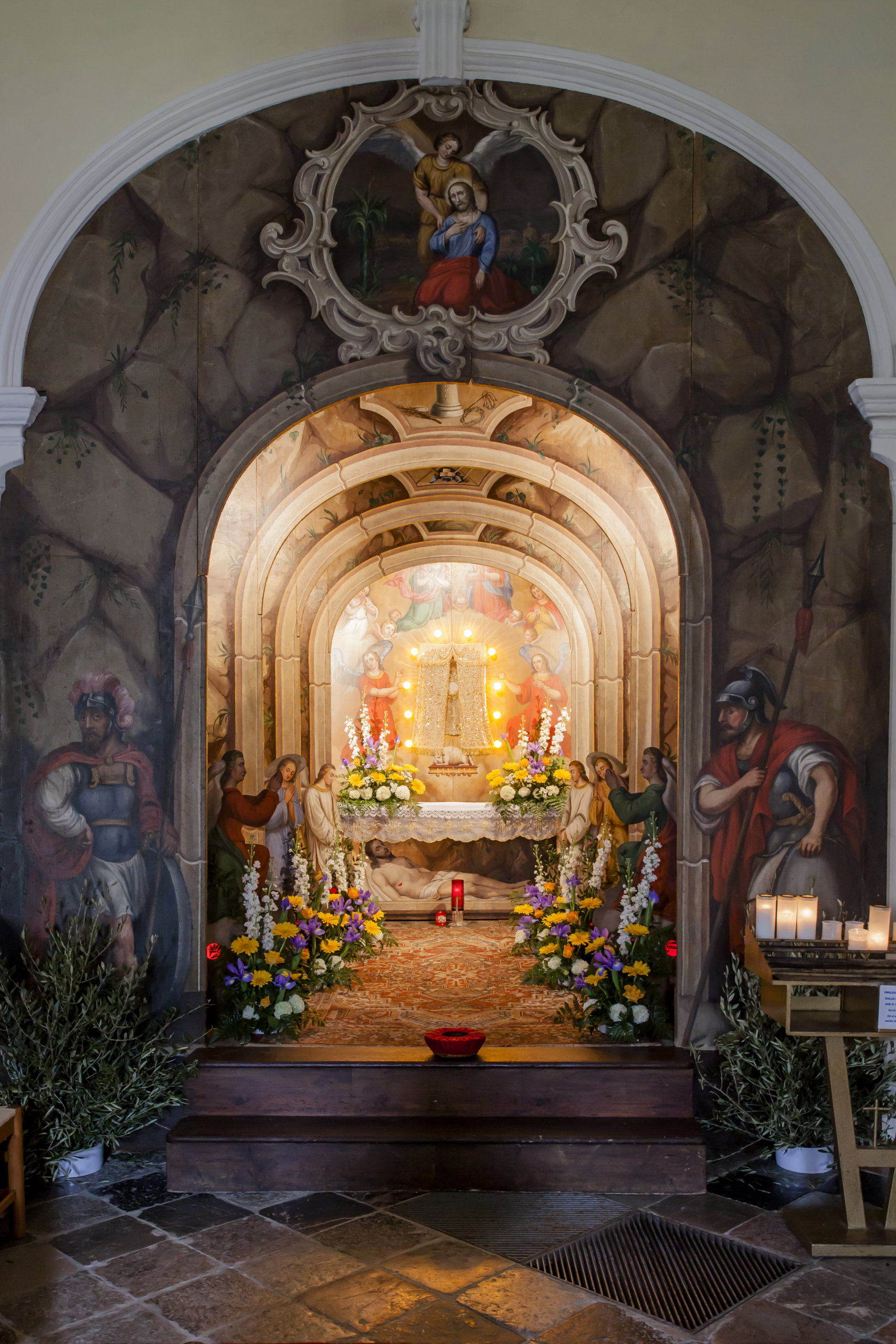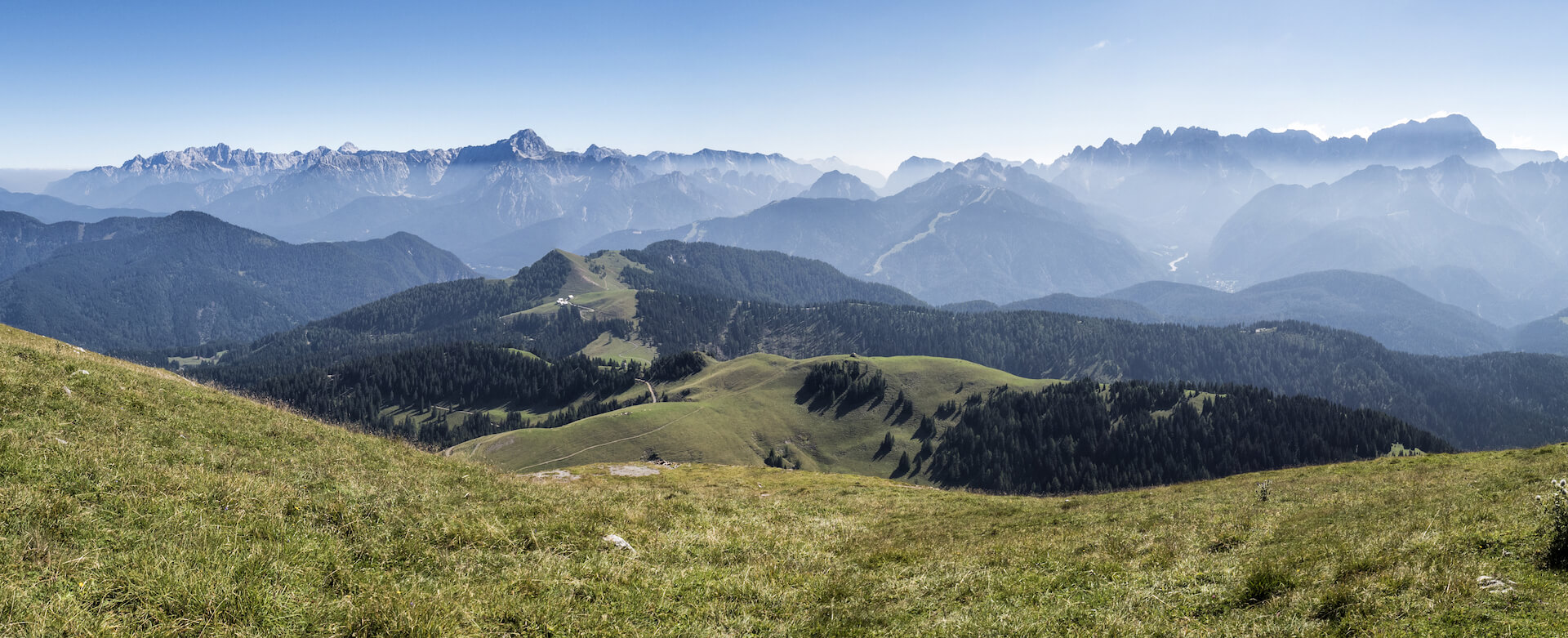In Valcanale, during Holy Week, there are many traditions end rituals that mark the Easter season.
EASTER RITES
The rituals associated with Easter in Valcanale begin on Palm Sunday, the day of the blessing of the Prajtl / Palmbusch, the shrub made of various plant essences – enriched with sweets and bows – which, by virtue of the blessing received, has protective powers over people, things and livestock. Therefore, it is placed between the rafters of the roof to ward off the danger of fire, planted in the field to guarantee a fruitful harvest, or crumbled and mixed with animal feed to preserve their health. The period between the service on Holy Thursday and Holy Saturday is characterised by the dark, croaking sounds of the tree frogs / craciule operated by the village children. It was once said that the bells ‘flew to Rome’ to be replaced by the ‘raganelle’, which on these days must mark time and call the faithful to mass. Holy Saturday is the day of the blessing of the basket containing Easter food: krenn, cooked ham, Reindling, Shartl and much more. This is followed by the blessing of the fire and water from the baptismal font. At the end of the liturgy, the faithful collect the embers of the blessed fire in a special pan. Introduced into the stove, which has been cleaned for the occasion, they will feed a renewed fire originating a warmth that will convey the blessing throughout the house. In Malborghetto, the embers are carried into the houses by the village children.

THE HOLY SEPULCHRES
The Easter triduum in Valcanale is a liturgical period characterised by a multitude of traditional celebrations and rites. Between Thursday and Friday, in some of the valley’s churches, the Holy Sepulchres are set up and, from Friday, when the Blessed Sacrament is moved to the sepulchre from the side altar where it had been placed on Thursday, volunteer firemen or some of the faithful begin the vigil. The sepulchre, which is intended to be a kind of reproduction of the one in Jerusalem, is a symbolic place whose construction has roots going back to the 16th century. In the Habsburg tradition, this ‘popular sepulchre’ takes on special significance when, at the end of the Friday service, and according to an ancient ritual, the veiled monstrance containing the host consecrated on Thursday in the Mass in coena domini is placed in it. The custom of carrying the Blessed Sacrament to the tomb dates back to 1577. Being a rite not included in the universal Catholic liturgy, it was part of special extraliturgical concessions. In the monstrance, the veil is transparent and luminous because it is woven of shining fibres to represent the burial cloth, which is removed at the Gloria when the resplendent monstrance is carried in procession. The removal of the monstrance ‘Auferstehungsfeier’ (German), ‘iesusovo ustajenie’ (Slovenian), is followed by the Resurrexit procession. This type of procession is a legacy of the Austro-Hungarian Empire, which had never renounced the ancient patriarchal rite abolished with the Council of Trent at the end of 1500. The 1950s saw the liturgical reform of Holy Week, which reaffirmed the concept that the host should be brought to the altar of repose and not to a tomb. In the Eucharist Christ is present, He is alive, so it was recommended that the place of reposition and adoration should not take on the characteristics of a tomb. On the basis of these indications, some parish priests no longer wanted to allow the setting up of the Holy Sepulchre, relegating this custom to the folkloristic rites (see Fusine). Today, six Holy Sepulchres are staged in Valcanale: Malborghetto, Ugovizza, Valbruna, Camporosso, Fusine and San Leopoldo. Of these six, three (Malborghetto, Valbruna and Ugovizza) are guarded by volunteer firemen and only one, that of Ugovizza, is also guarded at night. Normally, the vigil at the Sepulchre begins on Thursday/Friday evening and ends on Saturday with the Resurrexit procession (where it is still held).
The Holy Sepulchres can be visited from 25 March to 2 April 2024!










